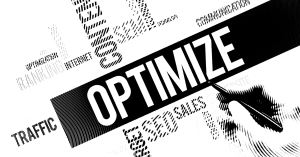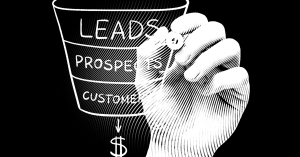
Optimizing buyer enablement
Optimizing buyer enablement You may be wondering how to entice customers to buy your product. There are a few key things you can do to
Salesmen used to be the lifeblood of businesses. They were the ones who went out and met with potential customers, built relationships and closed deals. But in recent years, technology has drastically changed the sales landscape.

Mads Winther

Nowadays, potential customers can easily find information about products and services online. They can read reviews, compare prices, and learn about features without ever talking to a salesperson. As a result, the role of the salesmen has changed.
Technology has also made it possible for businesses to target their marketing efforts more precisely. They can use data to identify potential customers and then use automation to reach out to them with personalized messages.
All of this has led to the death of the average salesmen. The old-fashioned sales model simply doesn’t work anymore. Businesses need to adapt or die.
Only time will tell. But one thing is for sure: the old model is dead.
Rest in peace, salesmen. You will be missed.
Alright, we’re kidding. It’s not the end. Just time for a software update.
The first thing a salesman can do is try to understand the new sales landscape. Technology has changed the way customers behave, and salesmen need to adapt their methods accordingly. They should learn how to use data to identify potential customers and then reach out to them with personalized messages.
The changes in technology have put purchasers in the driver’s seat. No longer are salesmen the gatekeepers of information. Now, potential customers can easily find out everything they need to know about a product or service online. They can read reviews, compare prices, and learn about features without ever talking to a salesperson. As a result, the role of the salesmen has changed.
Salesmen are now more focused on building relationships and providing support throughout the purchasing process. They work to understand the needs of their customers and then help them find the best solution. In many cases, salesmen are no longer responsible for closing the deal. Instead, they act as guides, helping their customers through the decision-making process.
While the role of salesmen has changed, they are still an important part of businesses. They provide a human element that technology cannot replace. They can build relationships and trust with potential customers, which is essential for making a sale.
The changes in technology have made it more important than ever for businesses to understand their customers. With so much information available online, purchasers are more informed than ever before. They know what they want and they are not afraid to ask for it. As a result, salesmen need to be prepared to answer tough questions and provide value at every step of the purchasing process.
In addition, businesses need to invest in modern sales tools that will help them automate and optimize their sales process. With the right tools, businesses can continue to generate leads and close deals, even in a tech-savvy world.
In addition, businesses need to invest in modern sales tools that will help them automate and optimize their sales process. With the right tools, businesses can continue to generate leads and close deals, even in a tech-savvy world.
Despite the challenges, the future of the salesmen is bright. Technology has created new opportunities for salesmen to connect with potential customers. By understanding the changes in the sales landscape, salesmen can adapt their methods and continue to be successful. With the right tools and a bit of creativity, businesses can close deals and build relationships in a tech-savvy world.
Salesman are the key to a business’s success. By generating leads and connecting with potential customers, businesses can continue to grow and thrive. In a world where technology is constantly changing, it’s important for salesmen to stay ahead of the curve and adapt their methods. With the right tools and a bit of creativity, businesses can close deals and build relationships in a tech-savvy world.
Sales organizations should first have a clear understanding of what the purchasing functions desires from the business relationship with the sales organization. This will give valuable clues as to how best to approach, serve, and support these customers. Additionally, sales organizations should consider the following:
Establish a central repository for customer data and information
Use data and analytics to develop targeted marketing and sales strategies
Implement a customer relationship management (CRM) system
Train sales staff on how to best serve and support purchasers
Invest in modern sales tools and technologies
The focus should be on dividing customers based on how they want to be served rather than on traditional product/service attributes. Additionally, sales organizations should consider developing dedicated teams to support large purchasers. These teams should have the necessary skills and knowledge to support these customers throughout the entire purchase process.
If you’d like to stay on top of industry best practices, join our community at The Playbook House where we’ve created a sales playbook box for B2B sales team to make their lives easier as it includes a community with video tutorials, free templates for building playbook elements, examples, weekly live events, FAQs, and an online forum.
Those who join our community will have access to the latest tips, tricks, and strategies for enhancing their B2B sales skills. We look forward to helping you reach your business goals!
A Sales Playbook is the go-to tool for you and your sales team when you want to built and implement a repeatable, scalable, and profitable sales motion

Optimizing buyer enablement You may be wondering how to entice customers to buy your product. There are a few key things you can do to

Developing a sales pipeline Sales pipelines are often thought of as being exclusively for sales teams, but the truth is that they can be just

The future of B2B sales is hybrid As the world of business evolves, so too does the way that companies sell to one another. In

The Playbook House ApS – Solbakken 38 – 9210 Aalborg SO – Denmark – CVR DK43114611
Copyright © 2022 The Playbook House ApS. All rights reserved